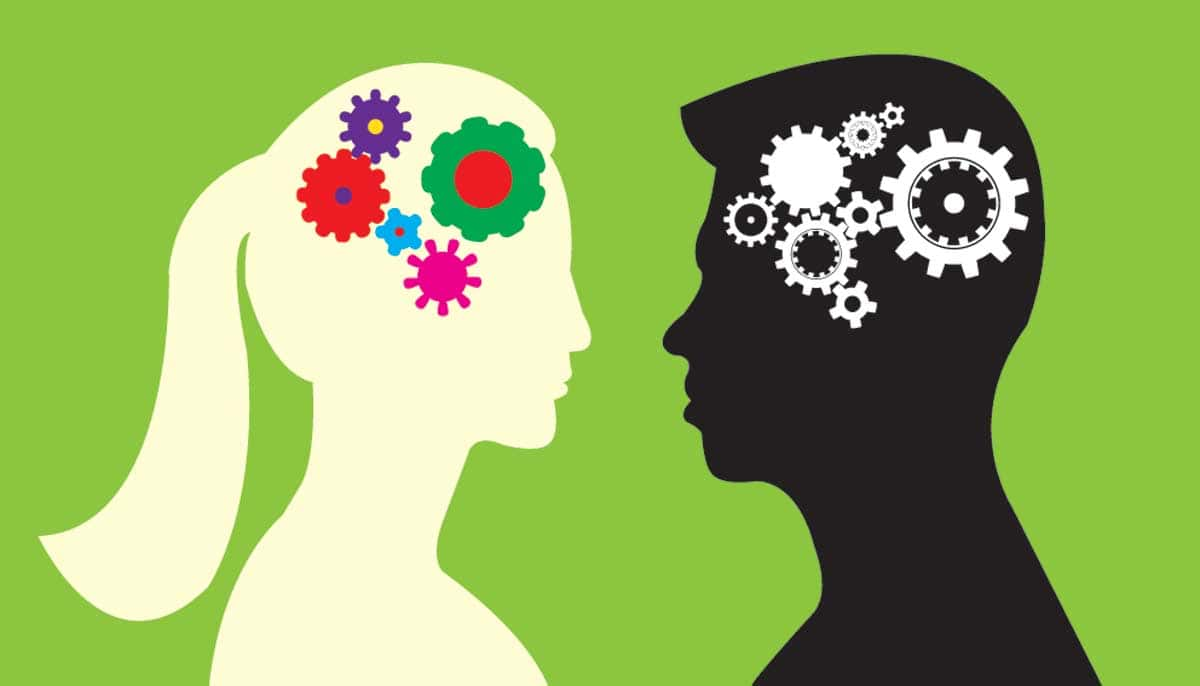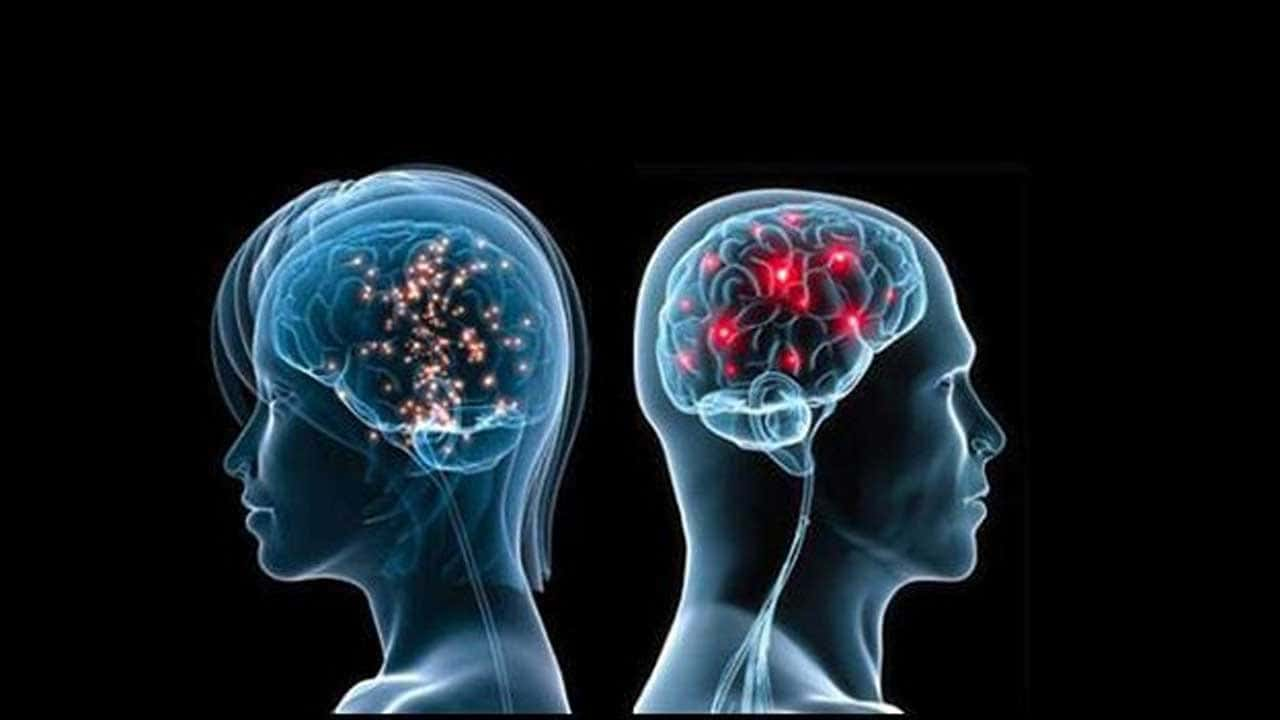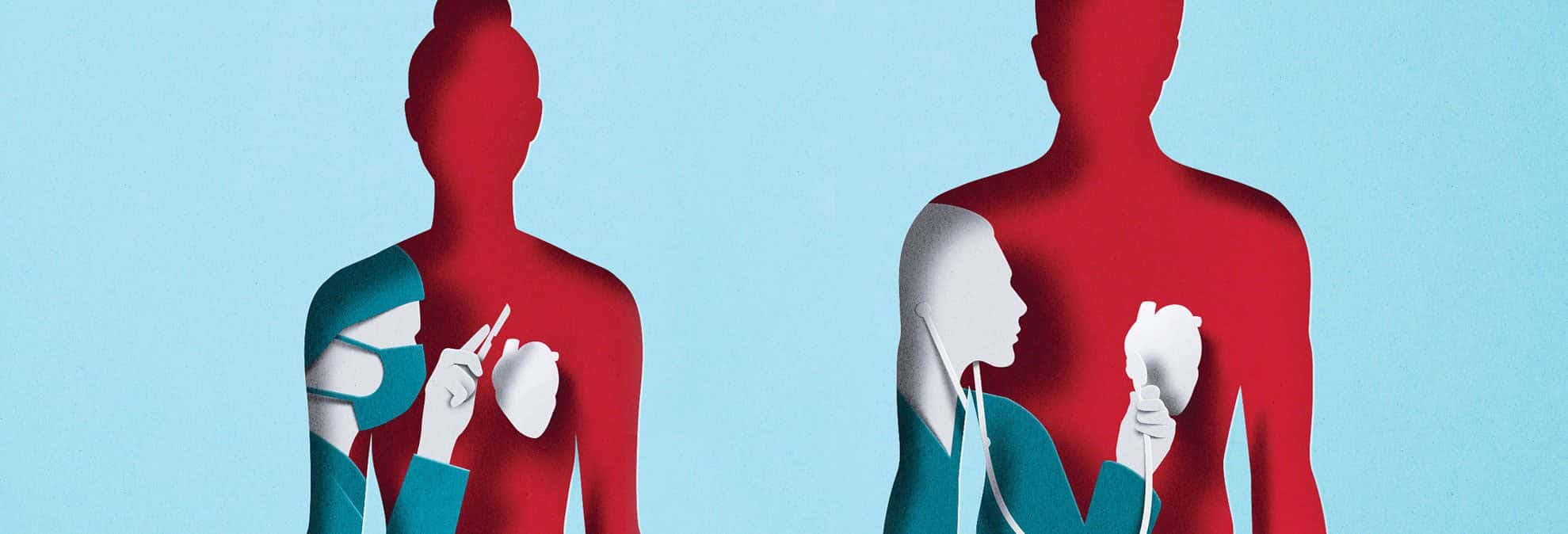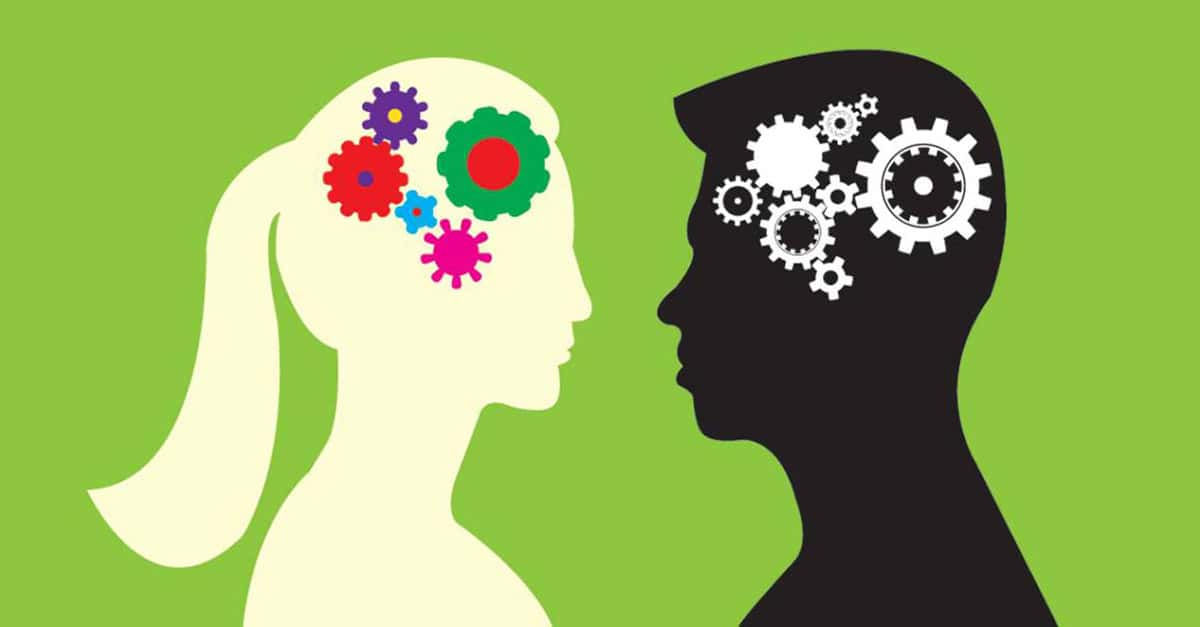"You've got to remember that men are men and women are women. And although a lot of similarities, there are some real differences." -- Helen Fisher
Besides being the fodder for essentially every comedian who's ever lived, the differences between men and women are, of course, pretty fundamental to the fabric of human life. They've been debated for millennia, with varying degrees rational argument used to implement social and legal norms which, in theory, help us to navigate our differences. Obviously, the whole thing is a bit of a quagmire—and people have used all manner of pseudo-scientific nonsense to help further their downright sexist agendas.
But with that being said, there are some genuine differences in the biology, chemistry and mental make-up of men in comparison to women, and vice-versa. Here we list off 45 of them, in the hopes that the next time you're tempted to make an assumption about the opposite sex, you stop and take some time to consider the facts.
45. Acoustic Size Judgement
A recent study in the Biology Letters suggests that men have an enhanced ability to judge someone’s size by the sound of their voice.
Not that this ability is necessarily exclusive to men. Other studies have shown that all people have a hard-wired talent for guessing a person's height, weight, and facial features, based on only a sample of their voice. But men do have a particular aptitude for it: they have been shown to correctly guess a person's general appearance, using their voice, at about 1.5 times the rate that women are able to.

44. Seeing Things Differently
Men and women literally see things in different ways. Men have thicker retinas and larger M cells than women. The M cells are responsible for tracking the movement of objects. Women have more P cells, which are responsible for identifying objects, as well as analyzing textures and colors.
Promise us you won't use this one the next time you're in a fight with your significant other. "That's what you saw, but you've got a statistically-dissimilar number of P cells than me," is not a valid argument when one party has been accused of leaving the seat up.

43. Right Minded
Women and wen process information differently. Men use mostly the left hemisphere of the brain, while women tend to employ both hemispheres.
More specifically, women tend to develop verbal capabilities in both sides of their brain. It's this "design" which leads to a scientific observation in which girls will commonly use more words than their male counterparts if they are asked to describe a story, person, object, feeling, or place.
Men, meanwhile, tend to have their verbal ability concentrated in only the left hemisphere... as well as fewer "verbal centers" overall. They also have less connectivity between the regions of their brain responsible for memory, and the regions responsible for language and self-expression.
All of which might help to explain a common stereotype: that women are better than men at speaking about their feelings, and are better at it anyway. We're a long way from fully understanding the difference, but so far it seems to be that women are just built more effectively for emotional communication.

42. Formed Before Birth
Male and female fetuses start showing brain differences as early as 26 weeks. At that stage, female brains start developing a thicker corpus callosum, which is the part of the brain that connects the left and right hemisphere.

41. Cool as a Cucumber
During periods of stress, both men and women release the hormone oxytocin... but female estrogen combines with the oxytocin to create a calming effect, while the relationship of testosterone to oxytocin has a tendency to make men more aggressive.
Once again, it seems that the science of brain chemistry is bearing out a pretty cliché stereotype.

40. 3-Dimensional Thinking
Men are better able to think of objects three dimensionally than women are. This skill may have been developed back in the days when men hunted and regularly participated in competitive battles.

39. Faces & Moving Objects
In a female baby’s first few month of life, their eye contact will increase by over 400%, and a boy’s will show significantly less improvement. In a study done on 100 babies on the day of their birth, girls were found to prefer looking at a young woman’s faces, while boys preferred moving objects.

38. Mathematical Mind
The area of the brain that is thought to influence mathematical ability is larger in men than in women. The brain areas that control math and geometry skills also mature about four years earlier in men.

37. A Spare Chromosome
Most babies that are born with defects and disabilities are male. One major reason for this is that females have a "spare X chromosome." Essentially, this results in redundancy that protects against certain recessive defects caused by genes on the X chromosome. For example, if a male baby is born with the gene for red–green color blindness on its X chromosome, the boy will have red-green color blindness. However, a female baby needs to have the red-green color blindness gene on both of its X chromosomes, which is much less likely to occur.


History's most fascinating stories and darkest secrets, delivered to your inbox daily.
36. Popped Up Veins
The more muscle-mass a person has, the more blood is needed to fuel it. As muscle mass builds, so do veins. Since men on average have more muscle-mass than females, they tend to have more prominent veins.

35.Honey, Have You Seen My Keys?
Women are better at remembering where things are than men are. Women are also more likely to navigate using landmarks, while men navigate using direction and distancces. So a woman is more likely to say, "Go straight until you hit the MacDonalds, then turn right and continue until you reach the top of the hill." A man is more likely to say, "Drive north for three miles, then turn east on Liberty Street. Continue on Liberty for two miles."

34. Hears Like a Bat
Girls have 11% more neurons than boys in the brain centers that control language and hearing. Not only do women hear better than men, they can also better distinguish between a broader range of emotional tones like crying.

33. Brow Bossing
There are three major differences between a male and female forehead. The most major difference is that men tend to have a ridge of bone running across the forehead at brow level called "brow bossing." Women’s foreheads are smoother, flatter, and have little or no bossing.

32. Store Fat Differently
Women tend to store fat in a ring shape around the abdomen, while fat in men is deposited between their organs. Women are genetically engineered to carry more fat than men, and tend to store it in their hips, thighs, buttocks, and lower abdomen. Men tend to store fat in the upper body, and especially the abdomen, thus creating the "beer belly."

31. Feel More Pain
Women genuinely feel more pain than men. When experiencing pain, a woman’s left amygdala--the part of the brain that is associated with internal functions--is activated. When men experience pain, the right amygdala is activated.

30. Chronic Worrywarts
Women worry more than men. There is no single reason for this, but hormone differences and environmental factors play a part. On the bright side, worrying gives women an advantage when it comes to foreseeing and handling problems.

29. He’s Not Just Ignoring You
During male fetal development, testosterone impacts the formation of the auditory system, and causes the brain to block out unwanted noise and repeated sounds. When a person repeats themselves several times, the male brain registers it as an “unwanted repetitious acoustic stimuli,” and they genuinely don’t hear it. Women on the other hand don’t have that skill.

28. Better Spatial Sense
Men’s parietal regions are thinner than women’s. This makes it easier for them to visualize rotating 3D objects.

27. Finger Length
The hormones testosterone and estrogen control the genes that determine finger length. More testosterone is generally equated with a longer ring finger, while estrogen is associated with a longer index finger.

26. Conflict and Competition
Men get a positive chemical boost from conflict and competition, while conflict elicits negative chemical reactions in women, creating fear, stress, and sadness. This ties back to nature, where the females of certain species rely on social ties for survival.

25. Colour Detection
Women are better able to detect shade variations in colours than men. Some scientists believe that sex hormones are behind the differences, as male sex hormones can change the development of the visual cortex. It’s also possible that the skill was developed in the days when women were gatherers, as it would have aided their search for food.

24. Processing Emotion
In adolescence, the brain activity associated with negative emotion moves from the primitive area of the brain into the cerebral cortex where language and reasoning centers are located, but this only happens in girls. This is why women are better at expressing emotion, while men seldom "want to talk about it."

23. Neurological Disorders
More men than women suffer from neurological disorders like dyslexia and autism. Studies have found that this is a matter of genetics. Male brains are more prone to genetic flaws, while women require more extreme genetic mutations to develop the same conditions.

22. Consonants and Vowels
As men and women age, men tend to have more difficulty hearing high-pitched sounds (consonants), while women struggle with low-pitch sounds (vowels).

21. 1000 Gene Difference
Women have a harder time metabolizing alcohol because they have less of a liver enzyme that breaks it down. There is a difference of 1000 genes in male and female livers. These extra genes help men process alcohol faster, which means that they are less likely to feel the effects of drinking than women.

20. No Sleep? No Problem.
A study out of Duke University revealed that men tolerate sleep deprivation better than women do. When women don’t get the sleep they need, they suffer mentally and physically. They are at higher risk of developing heart disease, depression, or blood clots, while men suffer fewer consequences.

19. Physical vs Verbal
Men tend to express aggression physically, while women express it verbally. This is because a man’s aggression pathway is more directly linked to the brain areas for physical action, and a woman’s is more closely linked to areas of verbal function.

18. Cold Feet
Blood flow in women is more concentrated around the lower extremities, while in men it’s spread more evenly. This is why women’s hands and feet get colder than men’s.

17. Water in the Blood
A woman’s blood contains more water and 20% fewer red blood cells than a man’s.

16. Not as Sad as You Think
The same hormone that produces breast milk in women also produces tears. Since women naturally have more of that hormone than men, their bodies produce also produce tears more easily than men. Some women have higher levels of the hormone, which makes them cry at the smallest stimulation, and not necessarily because they’re sad.

15. Multitaskers
While some studies have found that men are better at multi-tasking, others have shown the opposite. The accumulated data so far suggests that men and women are equally matched when it comes to their multi-tasking abilities, and as they age, they lose that ability at equal rates.

14. Linguistically Inclined
Women have larger frontal and temporal areas of the cortex, which are thought to influence language skills. These parts of the brain mature about 6 years earlier in girls than in boys.
If, in elementary school, it ever felt like the girls were running circles around the boys in the "not sounding like little morons" department, this might just explain why. When it comes to expressing oneself, men just drew the short-end of the evolutionary stick.

13. A Neater Hand
Girls develop fine motor skills earlier than boys do, which lends scientific validity to the stereotype that women have neater handwriting than men. Men and women also grip writing implements differently, which also affects motor skills when writing.

12. The Incredible Shrinking Brain
The female brain is more flexible than the male brain, and during pregnancy, women experience a major restructuring of the brain. Stress circuits are suppressed, the cortex increases in size, and the rest of the brain experiences shrinkage. No brain cells are lost in the transition, but new networks form and pathways change until the brain returns to normal around six months after delivery.

11. Both Sides vs One Side
When it comes to responding to emotional experiences, men only use one side of the brain while women use both sides. Women also retain a stronger memory for emotional events than men.

10. Sniffing Out Adultery
A study published in the Journal of Human Nature found that men are better at reading subtle clues about their partner’s infidelity. Studies have also revealed that men are more bothered by sexual infidelity, while women are upset by emotional infidelity.
Men are also more likely than women to falsely suspect cheating... quite possibly because the prospect of such unfaithfulness bothers them much more than their female-counterparts.

9. The Big Sniffer
If there's one single fact that we're a little worried to share here, this is it:
Men have 10% larger noses than women.
There. We said it.
Look, we know that the whole "which gender has the bigger nose" argument has been raging for centuries, if not millennia. We know how sensitive some people are to the issue. But it's true, and the science backs us up on this.
The masculine predisposition to elephant-style shnozzes, is tied to their larger muscle mass. It simply requires more oxygen for men to maintain muscle tissue growth and maintenance. And a bigger requirement for oxygen intake means a need for bigger nostrils... really! The difference in nose sizes starts to become apparent at age 11 when boys develop lean muscle mass, and girls grow more fat mass.
 Pictured: a very unsuccessful kiss.
Pictured: a very unsuccessful kiss.
8. Bigger Hearts
Men literally have bigger hearts than women. A female heart is about 2/3 the size of a man’s, and beats fewer times per minute.

7. Loose Ligaments
Women have looser ligaments than men, which gives them a greater range of movement, and makes it easier to do things like the splits. The downside to this greater flexibility is that women are at greater risk of joint injuries.

6. Thin Skinned
Women have thinner skin than men, and are thus more prone to develop lines and wrinkles as they lose collagen from aging. Men also have a higher collagen density, which makes them look younger longer.

5. Longer Lifespan
Women have an average life expectancy that is 5.3 years longer than men, largely due to better immunity, reduced risk for blood disease, and lower risk taking.

4. Tunnel Vision
Men use 7x more gray matter for activity than women. The gray matter areas of the brain are the information and action-processing areas, which can create a kind of tunnel vision in men when they are doing something.

3. Unfriendly Faces
During Puberty, the hormone vasopressin works with testosterone in males to influence a boy’s perception of faces. In one study, girls who were given a dose of vasopressin were more likely to rate a neutral face as friendly, while boys rated neutral faces as unfriendly or hostile.

2. Goodnight, baby
Many people have heard the stereotype that after sex "men want to sleep and women want to talk," but most people don't realize that it's actually much more complicated than this. Both sexes release oxytocin during orgasm, which is the "cuddle chemical" that makes people want to bond.
However, men have higher testosterone levels which not only can dull the effects of oxtocin but also can encourage seeking out the next high. Researchers have pointed out that men don't always want to sleep: they often want to eat, drink, or smoke, seeking out the next reward. But they also experience higher levels of sexual exhaustion, which is actually more mental than physical, which can soomtimes make them want to sleep.
Women, on the other hand, often experience something else after orgasm: the desire for another one. Female physiology allows them to be multi-orgasmic, with much shorter recovery time than men.
So there really are some phsiological factors that may make it hard for men and women to be on the same wavelength after doing the dirty.

1. Equal Intelligence
While Men have physically larger brains than women, size does not directly correlate with intelligence. What’s learned by experience or study helps forge neuronal connections, which in turn determines intelligence.












